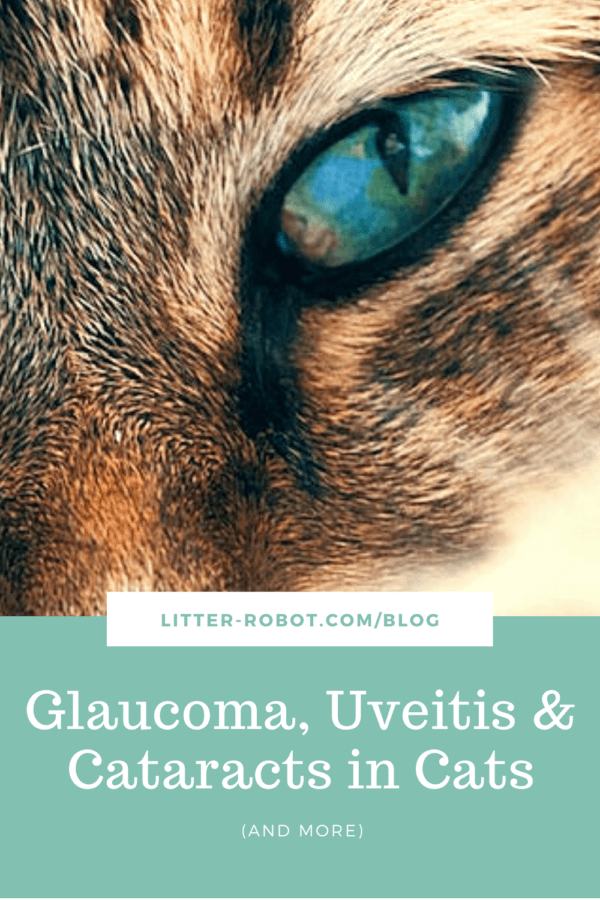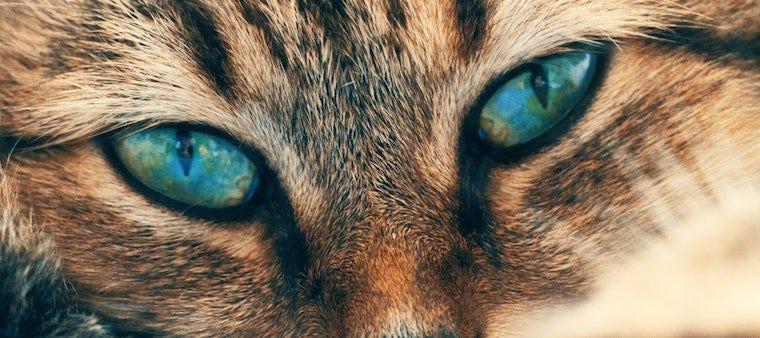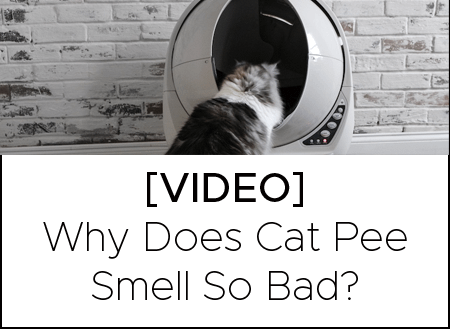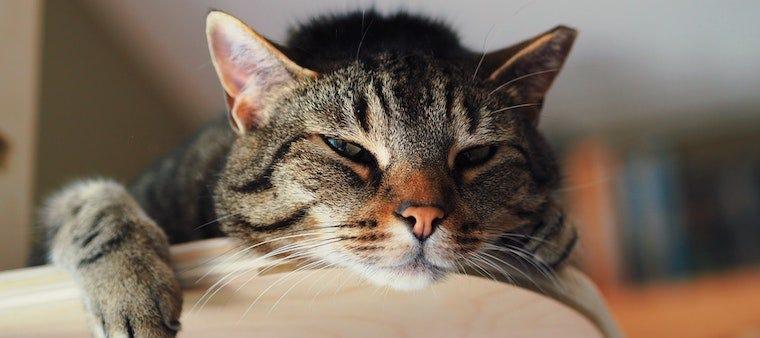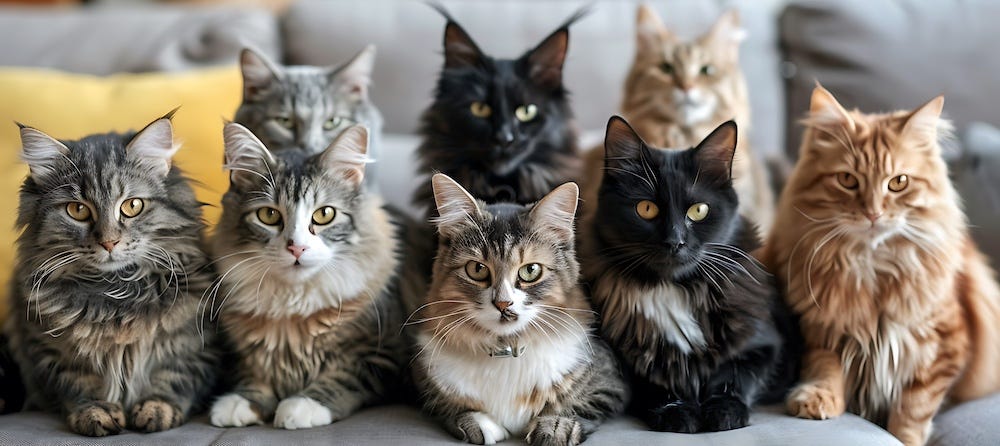In a previous blog post, I talked about how cats can develop eye problems that can range from mild to complete blindness. Check out that first post to learn about the important anatomical terms and clinical signs that your cat may show with eye problems. Today, I’ll be discussing cat eye problems in further detail, including cataracts in cats, glaucoma in cats, uveitis in cats, and more.
If your cat is showing any signs of ocular problems—like squinting, discharge from the eye, discoloration or cloudiness of the surface of the eye, excessive pink conjunctival tissue, or ocular pain—get to the veterinarian stat! We’ll need to do specific eye tests discussed in this blog post. The best way for us to save the vision in your cat’s eye is by aggressive treatment.
Keeping your cat’s eyes healthy
Years ago, I adopted an older tortoiseshell cat that had decreased vision in one eye. She had a large corneal scar over about 25% of the center part of her eye. It looked like an old cat scratch that wasn’t treated aggressively with medication, resulting in partial blindness. While my cat did great otherwise, I can’t imagine how annoying it was for her to look out of one eye with blurry, cloudy vision!
So, what do you need to know about keeping your cat and their eyes healthy? Know that there are several common cat eye problems or cat eye diseases. Again, some may be minor and result in irritation (like conjunctivitis), while others can result in potential blindness or vision loss (like uveitis, glaucoma, cataracts, retinal detachment, etc.)—even with treatment. While this list isn’t exhaustive, it includes the most common eye problems I see in cats.
Cataracts in cats
Cataracts in cats develop when the lens—deep in the center of the eye—becomes cloudy to completely opaque, resulting in decreased vision to complete blindness. Cats may develop cataracts in one or both eyes. Some cat breeds like British Shorthairs, Birmans, and Himalayans can develop inherited cataracts. Cats can develop cataracts secondary to inflammation (e.g., uveitis), infection (e.g., viral, bacterial, fungal, protozoal, or rarely parasitic), trauma, metabolic problems (e.g., diabetes mellitus, hypertension), cancer, or even cancer treatment (e.g., radiation).
Delicate surgery called phacoemulsification is the ideal treatment to remove cataracts in cats. This is less commonly done in cats as compared to dogs or humans. If surgery isn’t performed, long-term medication with topical anti-inflammatory eye drops are necessary to prevent secondary complications to the eye. The sooner we veterinarians diagnose metabolic problems (again, like diabetes mellitus or hypertension), the more aggressively we can treat it to prevent secondary complications like blindness from cataracts.
Glaucoma in cats
Glaucoma in cats is a very painful eye condition where the pressure within the eye (called the intraocular pressure or IOP) is increased. This can result in severe eye pain, and needs emergency treatment to prevent blindness! While glaucoma is rare in cats as compared to dogs, Siamese and Burmese cats are predisposed. Glaucoma is often due to underlying problems like tumors/cancer in the eye, bleeding into the eye, damage to the lens, or secondary inflammation of the eye (e.g., uveitis). That’s why we veterinarians treat ANY eye problems aggressively, as we want to minimize the risk of your cat developing secondary glaucoma.
Signs of glaucoma in cats include the following:
- Dilated pupil
- A bluish cloudy appearance to the entire cornea
- Eye pain
- Physical bulging of the eyeball
Treatment includes reducing the IOP as soon as possible with topical medications called carbonic anhydrase inhibitors (like dorzolamide) and beta-blocker drugs (like timolol). In severe cases, removal of the eye by surgical enucleation is necessary to prevent chronic pain.
Uveitis in cats
Acute inflammation in the front inside of the eye is called uveitis. Signs of uveitis in cats include:
- Ocular cloudiness
- Changes in pupil size
- Redness
- Tearing from the eye
Unfortunately, uveitis in cats requires an extensive—and expensive—workup, and often the causes have a poor prognosis. That’s because there are several causes, including infectious diseases (e.g., like FeLV or FIV, feline infectious peritonitis (FIP), Toxoplasma, Cryptococcus), cancer, trauma, bacterial infections, or even immune problems. Treatment depends on what the underlying cause is. It often includes topical or oral antibiotics, steroids, and careful monitoring of your cat’s intraocular pressure. Extensive blood work including titers for infectious diseases are necessary.
Corneal diseases: Corneal ulcers in cats & keratitis in cats
Next on my list of common eye problems in cats? Problems on the surface of the eye, or the cornea. If your cat goes outside and brawls with other cats, beware. Something as quick as a cat nail to the cornea can result in severe injury or even perforation of the eye, causing scarring and decreased vision. Sometimes bugs, dirt, or plant material can also result in corneal ulcers in cats. Even a tear deficiency or nerve problem (while rarer in cats) can cause injury to the cornea.
Signs of corneal problems include:
- Squinting
- Being light-sensitive
- Trying to paw at the eye
- Excessive tearing
- Abnormal discharge from the eye.
Discoloration of the cornea can occur also, which can be seen with several different types of ocular problems (ranging from a scratch to glaucoma), so when in doubt, get to a veterinarian immediately! We’ll need to stain the eyes (with an orange-tinged fluorescein stain) to see if the surface of the cornea is compromised. Treatment often includes a funnel hat (to prevent further injury to the eye), topical eye antibiotics (with NO steroids in it, which can make the injury worse), pain medication, atropine ointment (not drops please, as it makes your cat drool), and frequent rechecks by your veterinarian (to make sure it is healing!).
Rarely, other causes for corneal eye problems in cats include a corneal sequestrum. This is a dead, dark pigmented piece of corneal tissue. This needs to be removed by typically two surgical procedures (a keratectomy to remove the sequestrum and a conjunctival graft to protect the cornea). Corneal sequestrums occur more in Persian and Himalayan cats.
Conjunctivitis
Conjunctivitis is a fancy, long word which means inflammation of the conjunctiva—the thin sheet of whitish/pink-tinged tissue surrounding the entire globe. This is one of the most common eye problems I see with cats coming into the veterinary ER. Infections or irritants can cause swelling and redness to the mucous membranes of your cat’s eyes, resulting in… well, pink eye! This isn’t typically contagious to you, but it can be very contagious to other cats. I discuss conjunctivitis in cats at length in this post.
Signs of conjunctivitis in cats include squinting, excessive pinkness/swelling of the tissue, and thick, sticky eye discharge. Viruses (e.g., herpesvirus, calicivirus) from upper respiratory infections (URIs), along with bacterial causes, are often the cause but even irritants like cigarette smoke, pollen, and allergies can cause it. Once we’ve ruled out injury to the cornea (like a corneal scratch or ulcer), we typically treat this with a topical ophthalmic antimicrobial ointment such as terramycin or erythromycin or even anti-inflammatory drugs. In severe cases, we may use antiviral medications (both topically and orally) if the conjunctivitis doesn’t improve on antibiotics. I see conjunctivitis more in smoosh-faced cat breeds like Persians and Himalayans.
Keratoconjunctivitis
Keratitis in cats means corneal inflammation. This can be a result of trauma, infection (e.g., URI viruses), or other ocular conditions. Signs include discharge from the eye, tearing, squinting, eye pain, and redness. Top it off with more inflammation and you have keratoconjunctivitis, which now affects two parts of the eye (the clear cornea and the conjunctiva). Eosinophilic keratoconjunctivitis is diagnosed with corneal cytology—when we have to numb your cat’s eye, take a sample with a sterile cotton swab, and look at the cells under a microscope. Treatment can be frustrating, as cats typically need long-term eye drops for this disease. When in doubt, this one should be managed with the help of a veterinary ophthalmologist to prevent vision loss.
Eyelid abnormalities (e.g., entropion, eyelid mass)
Eyelid problems are more common in dogs, and less so in cats. But if your cat has “saggy” eyelids, an eyelid tuck may be necessary. If your cat was diagnosed with entropion, that means that the eyelids roll inward, and the tiny eyelashes slowly scrape and irritate the surface of the eye. This can result in corneal scarring and injury and needs prompt surgical treatment. Less commonly, eyelid masses (both benign and malignant) can also grow on the eyelids, resulting in irritation or corneal ulcers in cats. These should ideally be surgically removed and biopsied by a board-certified veterinary ophthalmologist.
Globe abnormalities
If your cat’s eye bulges or seems to recess back, it usually indicates a significant medical problem. With bulging, it’s often due to a tumor or infection growing behind the eyeball, pushing it forward. If the eye is sunken, sometimes that’s from dehydration or medical problems (including diabetes, hyperthyroidism, kidney disease, and cancer) that cause weight loss.
Iris abnormalities (e.g., melanosis, melanoma)
If you notice that your cat’s iris becomes abnormally pigmented or “freckled,” it could be iris melanosis, which is benign. However, this can progress to a malignant cancer called melanoma. When in doubt, have it monitored carefully, as removal of the eye is sometimes necessary to prevent cancer from spreading to the rest of the body.
Retinal damage (e.g., retinal detachment)
This is one of my most hated eye problems as a veterinarian, as it results in acute permanent blindness. Signs of retinal problems include acute blindness, dilated pupils, blood-appearance in the eye, or a white-colored pupil. Retinal injury typically is a result of systemic body problems like high blood pressure in geriatric cats—especially cats with chronic kidney failure, hyperthyroidism, and heart disease. The blood pressure gets so high (with normal being 120 mm Hg) that it causes the delicate cell layer of the back of the eye to “blow off” from hypertension (e.g., systolic blood pressure > 180-200 mm Hg). Sometimes prompt veterinary care can restore some vision. Most of the time, it results in permanent blindness. Certain infections or cancers can also cause problems with the retina.
Prognosis
The prognosis for eye problems in cats is excellent to poor, depending on what the diagnosis is and what the response to treatment is. As soon as you notice any abnormality to your cat’s eye, get to a veterinarian right away. That way we can diagnose and treat it immediately before secondary complications (like glaucoma or cataracts) occur. The prognosis is generally better the sooner we diagnose it. And there’s a higher likelihood of retaining vision!
Keep in mind that you should never use medications from a previous pet in the eye without consulting a veterinarian. That’s because certain types containing steroids or other ingredients can actually worsen the problem or cause rare anaphylactic reactions.
While your cat may have nine lives, they only have two eyes! We want to keep them as healthy as possible!
Cover photo by Andrii Ganzevych on Unsplash
